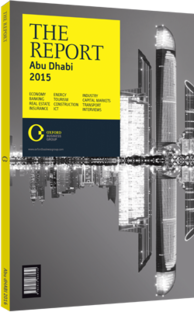Harnessing the region’s islands, desert and oases to attract local and international travellers
Al Gharbia features two of the Gulf’s most promising tourist destinations: its islands, and the desert and oases around Liwa. Its long coastline, pristine desert and beautiful, undeveloped islands are all important assets for the region, as is its year-round sunshine and access to Abu Dhabi International Airport. The region can also lay claim to a traditional desert culture that has remained intact to a far greater extent than is the case elsewhere in the Gulf region.
Diversification
The tourism sector is a significant potential contributor to diversification. Indeed, the government forecasts that Al Gharbia could be attracting up to 2m visitors a year within two decades. By comparison, the emirate of Abu Dhabi was expected to attract 3.2m visitors in 2014, according to industry experts quoted in the national press, but many of these will be business tourists who will only visit the capital.
The focus will be on attracting UAE residents for short breaks and international visitors for “add-on” trips when they are visiting other destinations in the UAE. In the former case, a market already exists, with Liwa well established as popular weekend break destination. As for the latter, for businesspeople visiting Abu Dhabi City and other travellers stopping in transit, trips to Al Gharbia’s islands, desert and coastline would make an enticing getaway. A third market being targeted comprises those travelling overland to and from other Gulf states, including travellers looking for somewhere to stop during their journey, or those with more time keen to explore the attractions within Al Gharbia itself.
New Destinations
While Liwa Oasis has been drawing visitors for some time, other destinations have started to open up to tourism in recent years. One is the Arabian Wildlife Park located on Sir Bani Yas Island. Once the private nature reserve of Sheikh Zayed bin Sultan Al Nahyan, the founder of the UAE, it has been open as a tourist destination for the past six years. The park, covering more than half the 87-sq-km island, has over 10,000 free-roaming animals, including cheetahs, giraffes and the UAE’s largest herd of Arabian oryx.
Accommodation
Accommodation options include the Desert Islands Resort & Spa, with 64 rooms and villas, and Anantara Al Sahel Villa Resort, with 30 villas, which opened in early 2014. Anantara, a Thai-based hotel group, also opened the Qasr Al Sarab Desert Resort in the Liwa Desert in 2009. The Dh700m ($190.5m) resort has 206 rooms, villas and suites, restaurants, and access to a range of activities from dune bashing to falconry.
In February 2014, the Ghayathi Hotel opened in the city of the same name. The Ghayathi, a 117-room business hotel, aims to deliver the same standards of facilities and services as similar hotels in the cities of Abu Dhabi and Dubai, including a function room for events.
Mohamed Khalfan, chairman of Marina Investments Company, which owns the hotel, said that his firm plans to make further investments in Al Gharbia, including in the expansion of the Ghayathi and the development of a hotel in Madinat Zayed, in response to anticipated demand from both business and leisure tourists.
One of the biggest tourism developments under way is Delma Beach Resort, which will cover an area of 55,000 sq metres on the west coast of Delma Island. Delma has been inhabited for 7500 years, and was once a centre of water trading thanks to its freshwater wells, as well as being a focus for pearling.
The resort development covers an area of around 18,000 sq metres, including a private beach, chalets, water sports facilities, camping sites, swimming pools and a retail area. According to Mohammed Ebrahim Al Hosani, regional development director at the Department of Economic Development, the resort will further enhance Delma’s appeal to domestic and foreign tourists. Delma is connected to Abu Dhabi City by three weekly flights from Al Bateen Executive Airport, a terminal predominantly used by business travellers.
Saeed Mohamed Al Suwaidi, the developer of the Delma Resort, told OBG that he hoped the project would help to make the culture and history of the island accessible to more tourists, while also stimulating investment and increasing business for local partners.
You have reached the limit of premium articles you can view for free.
Choose from the options below to purchase print or digital editions of our Reports. You can also purchase a website subscription giving you unlimited access to all of our Reports online for 12 months.
If you have already purchased this Report or have a website subscription, please login to continue.

